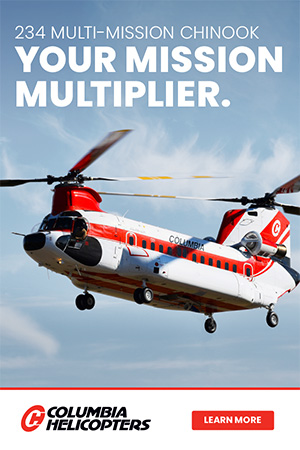Bell Helicopter couldn’t miss out on this emerging sector of the aviation industry. Its official statement expressing its intention to move into the vertical takeoff and landing sector for urban passengers has sent a clear message to rivals Airbus, Volocopter and eHang, to name only a few. That said, it remains difficult, for now, to assess the status of its project.
Bell Helicopter took advantage of the 2018 Consumer Electronics Show (CES) in January to partially unveil its plans for its short-distance air taxi module. This initiative followed in the footsteps of the manufacturer’s April 2017 announcement that it would be partnering with California-based Uber to develop a new aircraft concept.
While Bell has made its intentions clear, and the target market is the same one other manufacturers in the nascent sector aim to serve, it is much too early to paint a clear picture of the finished product, particularly its technical characteristics. The computer-generated images published by Bell provide zero information on the aircraft’s moving parts and engine. At first glance, it looks like it will be a piloted four-seater (one pilot and three passengers). How many rotors should we expect to see? In the short interview Scott Drennan agreed to give Helicopter Industry (in this issue), the Director of Engineering Innovation revealed very little, only briefly alluding (twice) to Bell Helicopter’s experience with tiltrotor aircraft. Could that be a hint? Or simply a reference to the manufacturer’s vast experience in designing and perfecting daringly new technical solutions? As for the aircraft’s power source, two solutions are currently under review. The first (hybrid propulsion) seems fated to fail, given current electrical power reserve capabilities—that is, unless the Bell Helicopter research teams have secured guaranteed improvement from battery manufacturers. Given the situation, the second power source seems more plausible.
In the meantime, the presence of Bell Helicopter—one of the six major rotorcraft manufacturers worldwide—in this sector foreshadows the multiplication of air taxi designs destined to open a new page in the history of aviation.
Scott Drennan, director of innovation, Bell Helicopter :
Helicopter Industry : Since when does Bell Helicopter work on this concept?
Scott Drennan : Bell Helicopter will be working with Uber as a collaborator to accelerate the large-scale deployment of vertical take-off and landing vehicles (VTOLs) in order to fulfill a shared mission of providing a safe, reliable transportation service to everyone, everywhere. The announcement came April 2017 during the Uber Elevate Summit.
HI : What would be the mode of propulsion and energy source used by this “taxi”?
We are exploring several options, including hybrid and all electric propulsion.
HI : Does a designated team at Bell Helicopter work exclusively on this concept now?
For more than eight decades, Bell has pushed the boundaries of flight, and our team is bringing new ideas to life to solve the hard challenges that limit rotorcraft. Our core business is vertical lift – so while the mission and the vehicle are different than a traditional helicopter or even a tiltrotor, the urban air taxi market is a natural fit with Bell’s experience.
HI : How long should the studies extend before a test machine appears?
We have to address certification and air traffic control. This will require strong partnership between manufacturers, operators, and regulatory authorities. Bell has the certification experience to lead that effort. What I can say is when our partners and the infrastructure is ready – we’ll be ready to test.
HI : On the Bell Helicopter calendar, when could a prototype machine (or a technology demonstrator) come to light?
The announcement (in April 2017) is the beginning of a collaboration with Uber to accelerate the large-scale deployment of vertical takeoff and landing vehicles (VTOLs). Bell’s initial focus is on technology development – which is already underway – that will lead to a new air taxi vehicle.
HI : When could a first flight reasonably occur?
We’re not sharing any designs or timelines yet – I’m sure you understand the need to protect our competitive developments until the right time. I can tell you that we are actively pursuing new technologies and we are comfortable with our timetable, especially given the complexities of this initiative.
HI : What are the market estimates of Bell Helicopter for such a machine?
The air taxi is not a new concept; we have been moving people over urban obstacles for decades, and Bell pioneered tiltrotors, the most innovative VTOL aircraft in operation today. We believe the urban air taxi market for small, heavily automated electric and hybrid vertical lift aircraft is viable. What is “new” is the efficiency, affordability and regulatory environment required to make air transport as available and reliable as running water.
By Frédéric Blanc
@photos by Bell Helicopter
















